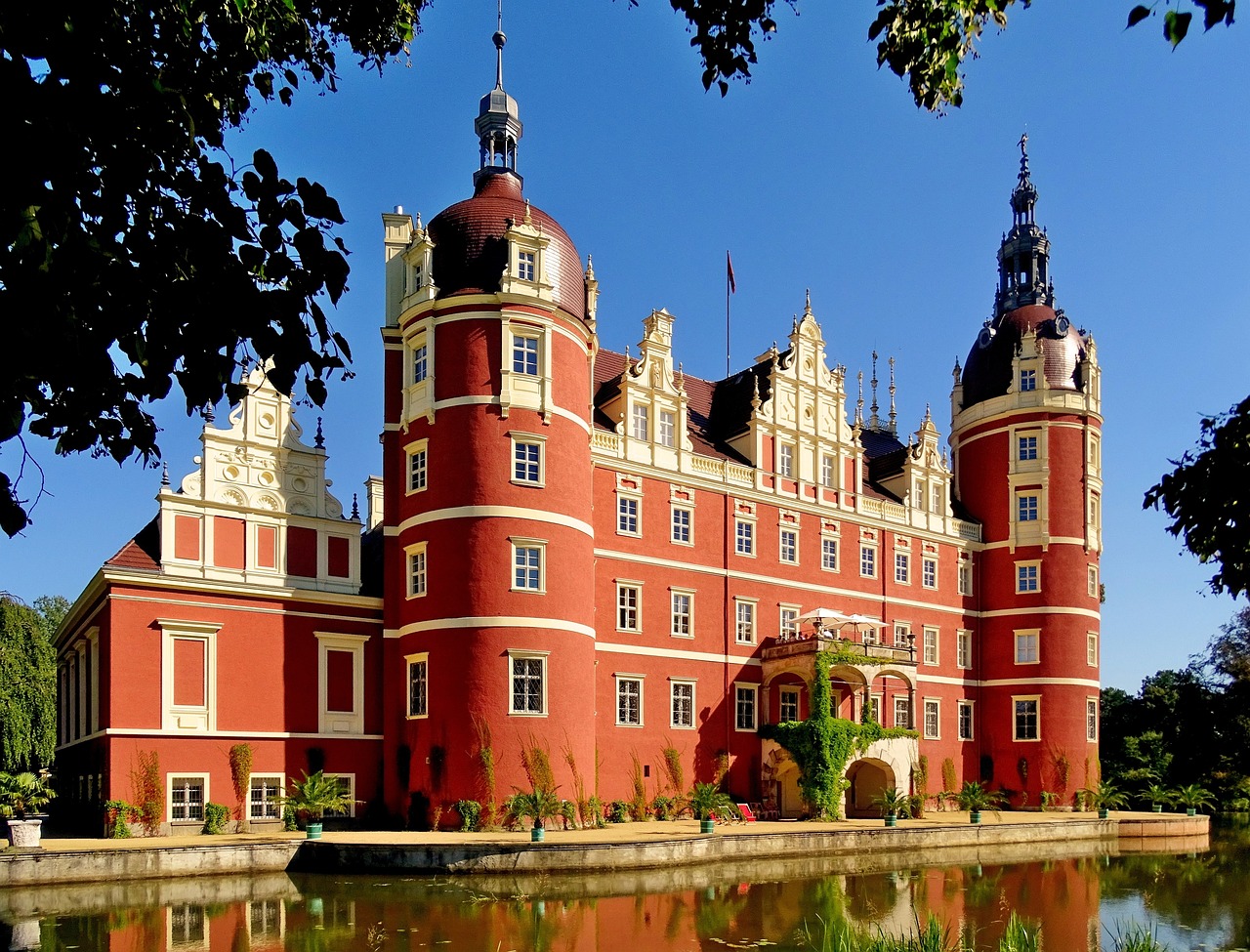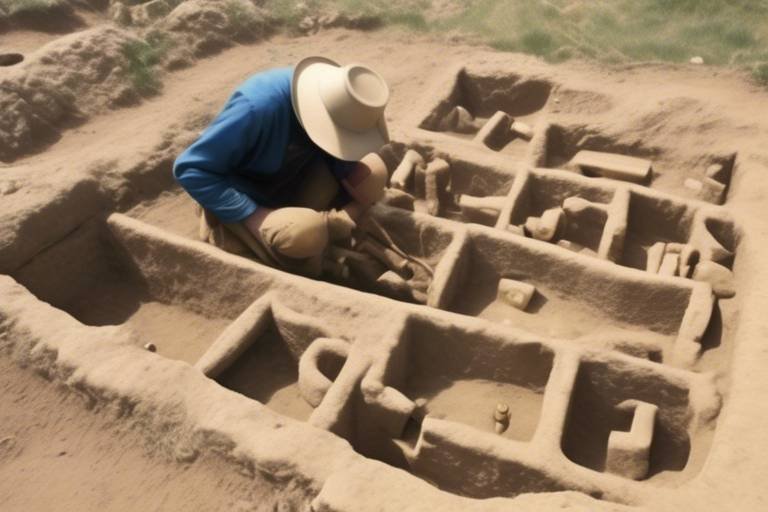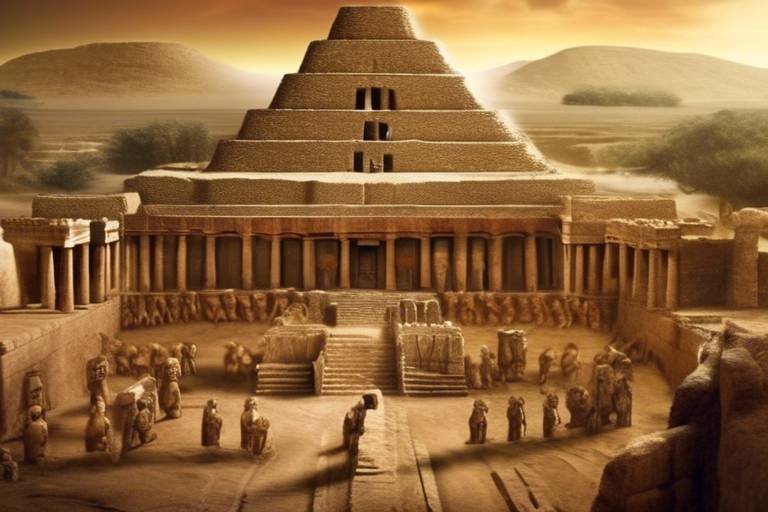The Impact of Globalization on Local Heritage
Globalization has become a powerful force shaping the world we live in today. Its impact on local heritage is profound and multifaceted, influencing the preservation, promotion, and commodification of cultural practices, traditions, languages, and historical sites. As the world becomes increasingly interconnected, local heritage faces both opportunities and challenges in the face of this global phenomenon.
One of the significant consequences of globalization is the homogenization of culture, where unique cultural identities and traditions risk being overshadowed by global influences. Local practices that have been passed down through generations face the threat of being diluted or even lost as global trends take center stage. This phenomenon raises questions about the balance between embracing global connectivity and preserving the richness of local heritage.
Heritage tourism has emerged as a prominent outcome of globalization, offering both benefits and drawbacks to local communities. While it provides opportunities to showcase local heritage sites and traditions to a global audience, there is also the risk of exploitation and commodification. The challenge lies in leveraging heritage tourism as a tool for sustainable development while safeguarding the authenticity and integrity of local heritage.
The impact of globalization on language and identity is another critical aspect to consider. Indigenous languages and dialects, integral components of cultural identity and heritage, are increasingly at risk of fading away in the face of dominant global languages. The preservation of these linguistic treasures is essential for maintaining the unique cultural tapestry of communities around the world.
In the digital age, technology plays a vital role in the preservation and promotion of local heritage. Digital platforms such as virtual museums and online archives offer new avenues for sharing and safeguarding cultural heritage in the globalized world. These digital tools provide opportunities to reach a wider audience and engage with local heritage in innovative ways.
Global brands and consumer culture also exert influence on local traditions and craftsmanship, shaping the way cultural products are produced and consumed. The interplay between global brands and local culture raises questions about authenticity, sustainability, and the preservation of traditional practices in a rapidly changing world.
Community engagement is key to preserving local heritage in the face of globalization. Grassroots movements and cultural initiatives driven by local communities play a crucial role in safeguarding and promoting local heritage. By fostering a sense of ownership and pride in cultural identity, communities can actively contribute to the preservation of their heritage.
Government policies and international agreements are essential tools for protecting local heritage from the negative impacts of globalization. By enacting regulations and frameworks that prioritize the preservation of cultural heritage, governments can mitigate the risks posed by unchecked global influences and ensure the sustainability of local traditions.
Education and awareness campaigns are pivotal in promoting the value of local heritage and nurturing a sense of cultural pride amidst globalization. By educating future generations about the importance of preserving local heritage, communities can instill a deep appreciation for their cultural roots and heritage, fostering a sense of belonging and continuity.

Homogenization of Culture
Globalization plays a significant role in shaping the preservation, promotion, and commodification of local heritage, encompassing cultural practices, traditions, languages, and historical sites. It acts as a double-edged sword, bringing both opportunities and challenges to the conservation of unique local identities.
Globalization, like a powerful wave, sweeps across diverse cultures, often leading to the homogenization of local traditions and practices. As global influences permeate communities, there is a risk of losing the distinctiveness that makes each culture unique. Imagine a painting where vibrant colors slowly blend into a single shade, erasing the intricate details that once defined individuality.
While embracing global trends can bring innovation and connectivity, it also poses a threat to the rich tapestry of cultural diversity. Local customs and rituals that have been passed down through generations may face extinction in the face of overwhelming global norms. It's like a puzzle missing its pieces, losing the essence that once made it whole.
To counter this cultural erosion, communities must strive to preserve their heritage while adapting to the changing world around them. By celebrating their uniqueness and sharing it with the global community, they can create a harmonious blend of tradition and modernity, where diversity thrives amidst globalization's push for uniformity.

Heritage Tourism
Heritage tourism, a burgeoning phenomenon in the realm of travel, has been significantly shaped by the forces of globalization. This form of tourism revolves around visiting historical and cultural sites to gain insight into the heritage of a particular region. With the increasing interconnectedness of the world, more and more travelers are seeking authentic experiences that delve into the rich history and traditions of local communities.
One of the key impacts of globalization on heritage tourism is the promotion of local heritage sites to a global audience. Through digital platforms and social media, these sites can now reach a wider pool of visitors, attracting individuals from diverse backgrounds and cultures. This exposure not only brings economic benefits to the local communities but also fosters cross-cultural exchange and understanding.
However, the commodification of local heritage is a double-edged sword. While globalization has opened up new avenues for promoting these sites, there is also a risk of exploitation. In the pursuit of profit, some heritage sites may be commercialized to cater to mass tourism, potentially diluting their authenticity and significance. Striking a balance between economic development and heritage preservation is crucial in ensuring the sustainability of these sites for future generations.
Moreover, globalization has led to the standardization of heritage experiences in some cases. As global trends influence the expectations of tourists, there is a tendency for local traditions and practices to be homogenized to meet these expectations. This phenomenon raises questions about the preservation of unique cultural identities in the face of increasing global homogenization.

Language and Identity
Globalization has a profound impact on the preservation of local languages and dialects, which are integral to cultural identity and heritage. As the world becomes more interconnected, dominant languages often overshadow indigenous ones, leading to a decline in linguistic diversity. This erosion of linguistic heritage not only affects communication but also weakens the sense of identity and belonging within communities. The rapid spread of global languages through media, technology, and education poses a significant challenge to the survival of local languages, threatening to homogenize linguistic diversity.
Furthermore, the loss of languages can result in the disappearance of unique cultural expressions, oral traditions, and historical narratives that are passed down through generations. Language is not merely a tool for communication but a repository of cultural knowledge and identity. When local languages fade away, a vital link to the past and a distinctive marker of cultural heritage are lost. Preserving linguistic diversity is essential for maintaining the richness and authenticity of local cultures in the face of globalization.
Efforts to safeguard indigenous languages involve a combination of grassroots initiatives, educational programs, and digital tools. Community-driven language revitalization projects aim to empower speakers and revitalize endangered languages through education, documentation, and intergenerational transmission. By raising awareness about the value of linguistic diversity and promoting multilingualism, communities can resist the homogenizing effects of globalization and preserve their unique heritage.
Moreover, digital technologies play a crucial role in language preservation by providing platforms for archiving, teaching, and revitalizing endangered languages. Online resources such as digital dictionaries, language learning apps, and virtual libraries enable wider access to linguistic materials and facilitate language revitalization efforts. Digital preservation initiatives contribute to the documentation of oral traditions, dialects, and linguistic nuances that might otherwise be lost in the face of globalization.
In conclusion, the impact of globalization on local languages and identity underscores the importance of proactive measures to protect linguistic diversity and cultural heritage. By recognizing the intrinsic link between language and identity, communities can resist linguistic homogenization and preserve their unique cultural expressions for future generations. Language revitalization efforts, supported by digital tools and community engagement, are essential in safeguarding the linguistic richness that defines the cultural identity of diverse societies.

Digital Preservation
Exploring how globalization influences the preservation, promotion, and commodification of local heritage, including cultural practices, traditions, languages, and historical sites.
Analyzing how globalization leads to the loss of unique cultural identities and traditions as global influences dominate local practices.
Discussing the rise of heritage tourism as a result of globalization, focusing on how it can both promote and exploit local heritage sites and traditions.
Examining the impact of globalization on indigenous languages and dialects, and how this affects the preservation of cultural identity and heritage.
Exploring the role of digital technologies in preserving and promoting local heritage in the face of globalization, including virtual museums and online archives.
Investigating the influence of global brands and consumer culture on local traditions, craftsmanship, and cultural products.
Discussing the importance of community involvement in preserving local heritage in the globalized world, including grassroots movements and cultural initiatives.
Examining the role of government policies and international agreements in safeguarding local heritage from the negative impacts of globalization.
Highlighting the significance of education and awareness campaigns in promoting the value of local heritage and fostering pride in cultural identity amidst globalization.

Global Brands and Local Culture
Global brands wield significant influence over local cultures, often reshaping traditional practices and products to align with global consumer preferences. The infiltration of multinational corporations into local markets can lead to the dilution of authentic cultural expressions in favor of mass-produced, standardized goods. This phenomenon can be likened to a powerful wave crashing onto the shores of local communities, eroding the foundations of indigenous craftsmanship and heritage.
Moreover, the prevalence of global brands can overshadow local businesses and artisans, making it challenging for them to compete in a market saturated with well-known international names. This imbalance can result in the marginalization of local culture, as consumers gravitate towards familiar global brands rather than supporting local enterprises. It's akin to a David-and-Goliath scenario, with local businesses struggling to maintain their presence amidst the towering giants of the global market.
However, some argue that the fusion of global brands with local culture can create unique hybrid products that appeal to a broader audience while preserving elements of traditional heritage. This blending of influences can be compared to a vibrant tapestry woven from threads of both global and local identities, showcasing a harmonious coexistence of diverse cultural elements.
Despite the challenges posed by the dominance of global brands, there is potential for collaboration and mutual benefit. By embracing elements of local culture and incorporating them into their global branding strategies, multinational companies can contribute to the preservation and promotion of local heritage. This collaboration can be likened to a dance between tradition and modernity, where each partner brings something valuable to the cultural exchange.

Community Engagement
Community engagement plays a pivotal role in preserving local heritage in the face of globalization. It involves active participation and collaboration from community members to safeguard cultural practices, traditions, and historical sites that hold significance to their identity. Through community engagement, individuals come together to raise awareness, organize events, and advocate for the protection of their heritage.
One effective way to foster community engagement is through cultural initiatives that involve local residents in activities such as traditional crafts workshops, storytelling sessions, or heritage festivals. These initiatives not only celebrate the rich cultural heritage of the community but also provide a platform for individuals to actively engage with and contribute to the preservation of their traditions.
Furthermore, grassroots movements play a vital role in community engagement by empowering local residents to take ownership of their heritage. By mobilizing community members to voice their concerns, advocate for policy changes, and participate in conservation efforts, grassroots movements can effectively protect local heritage from the negative impacts of globalization.
Collaboration with local schools and educational institutions is another key aspect of community engagement. By integrating heritage education into the curriculum and organizing field trips to historical sites, students can develop a deeper appreciation for their local heritage and become ambassadors for its preservation within the community.
Overall, community engagement serves as a powerful tool in the preservation of local heritage by fostering a sense of pride, ownership, and responsibility among community members. By working together to protect and promote their cultural identity, individuals can ensure that their heritage continues to thrive amidst the challenges of globalization.

Policy and Protection
When it comes to safeguarding local heritage in the face of globalization, the role of government policies and international agreements becomes paramount. These policies serve as the protective shield that shields local cultural practices, traditions, languages, and historical sites from the negative impacts of global influences. By implementing regulations and laws that prioritize the preservation of local heritage, governments can ensure that the unique identity of their communities is not eroded by homogenization.
One of the key aspects of policy and protection is the establishment of heritage conservation laws that dictate how historical sites and cultural practices should be preserved and promoted. These laws set guidelines for development projects in sensitive areas to prevent the destruction of heritage sites and ensure their longevity for future generations. Additionally, international agreements play a crucial role in fostering collaboration between countries to protect shared heritage and prevent the exploitation of cultural resources for commercial gain.
Moreover, funding allocated by governments for heritage protection initiatives is essential in supporting conservation efforts and raising awareness about the significance of local heritage. Financial support enables communities to implement preservation projects, conduct research on cultural practices, and organize events that celebrate their heritage. By investing in the safeguarding of local heritage, governments demonstrate their commitment to preserving the cultural richness that defines their nation.
Collaboration between governmental bodies, local communities, and heritage experts is also vital in developing comprehensive policies that address the diverse needs of different cultural groups. By engaging in dialogue and consultation with stakeholders, policymakers can ensure that heritage protection measures are inclusive, respectful of diverse traditions, and responsive to the evolving challenges posed by globalization. This participatory approach strengthens the bond between communities and their heritage, fostering a sense of ownership and responsibility for its preservation.
In conclusion, policy and protection are essential components in the ongoing battle to safeguard local heritage in the globalized world. By enacting robust laws, fostering international cooperation, providing financial support, and engaging with communities, governments can create a protective framework that shields local cultural identities from the homogenizing forces of globalization. Through proactive measures and collaborative efforts, the rich tapestry of global heritage can be preserved for future generations to cherish and celebrate.

Education and Awareness
Educating the public about the importance of local heritage is crucial in the face of globalization. By raising awareness about the significance of preserving cultural practices, traditions, and historical sites, communities can instill a sense of pride and ownership in their heritage. Schools play a vital role in this process, integrating local history and traditions into their curriculum to ensure that the younger generation values and respects their cultural heritage.
Furthermore, awareness campaigns can be organized to engage the broader public in understanding and appreciating the unique aspects of local heritage. These campaigns can take various forms, from exhibitions showcasing traditional craftsmanship to cultural events celebrating indigenous languages and customs. By actively involving the community in these initiatives, a sense of collective responsibility towards safeguarding local heritage can be fostered.
Moreover, leveraging digital platforms can significantly enhance education and awareness efforts. Online resources such as virtual tours of heritage sites, interactive storytelling about local traditions, and digital archives of historical documents can reach a wider audience and create lasting impressions. Through innovative use of technology, the narrative of local heritage can be shared globally, transcending physical boundaries and reaching individuals worldwide.
Frequently Asked Questions
- What is the impact of globalization on local heritage?
Globalization influences the preservation, promotion, and commodification of local heritage, affecting cultural practices, traditions, languages, and historical sites.
- How does globalization contribute to the homogenization of culture?
Globalization often leads to the loss of unique cultural identities and traditions as global influences dominate local practices, resulting in a more uniform global culture.
- What is heritage tourism and how is it related to globalization?
Heritage tourism has risen as a result of globalization, both promoting and sometimes exploiting local heritage sites and traditions for economic gain.
- What role do digital technologies play in preserving local heritage?
Digital technologies, such as virtual museums and online archives, are crucial in preserving and promoting local heritage amidst the challenges posed by globalization.
- How does globalization impact indigenous languages and cultural identity?
Globalization often threatens indigenous languages and dialects, which are integral to cultural identity and heritage, leading to their decline and endangerment.
- What can communities do to protect their local heritage in a globalized world?
Community engagement through grassroots movements and cultural initiatives plays a vital role in preserving local heritage and traditions in the face of globalization.
- Why is education and awareness important in safeguarding local heritage?
Education and awareness campaigns are essential in promoting the value of local heritage, fostering pride in cultural identity, and ensuring its preservation amidst globalization.



















